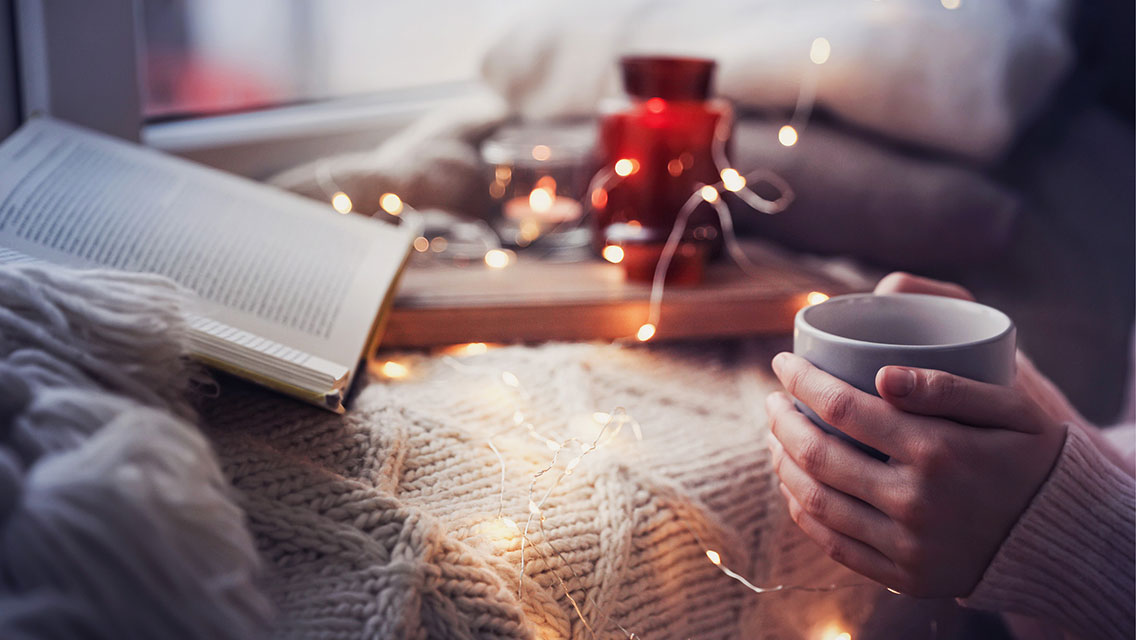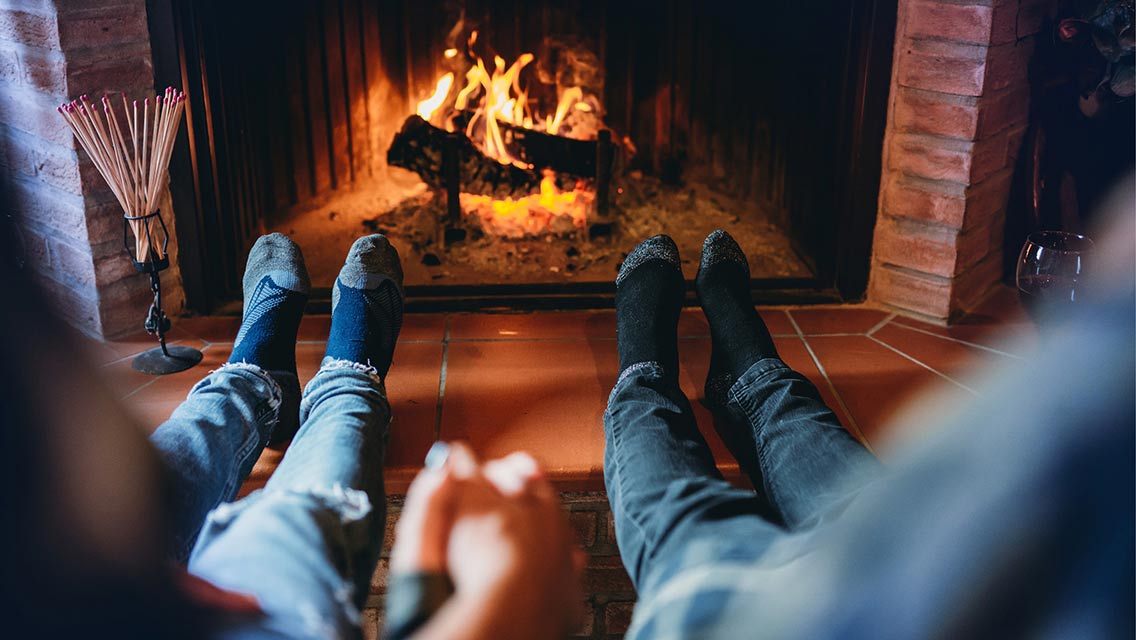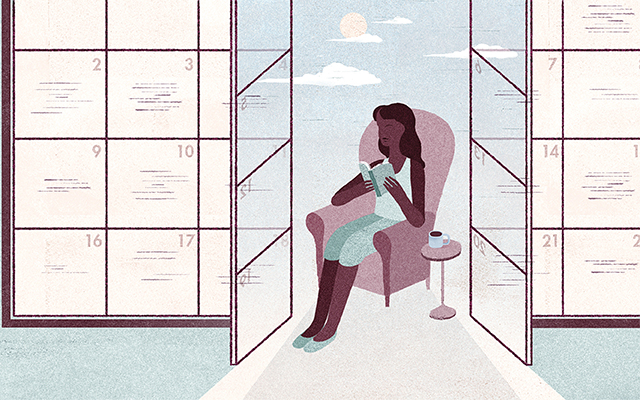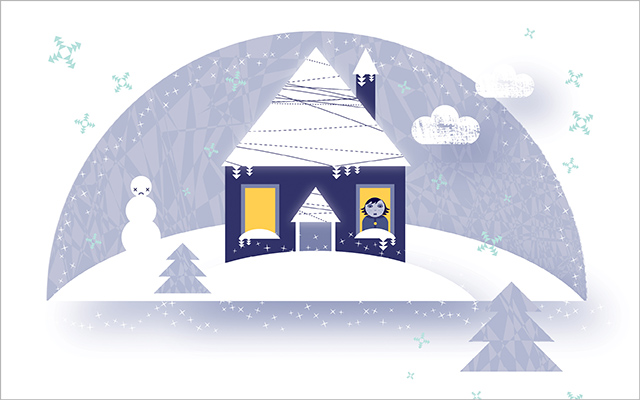Many of us crave sanctuary from our hectic lives, but we’re not sure how to find it — or whether it’s even possible. Enter hygge (pronounced “hoo-gah”), the Danish art of creating an atmosphere of coziness, warmth, and refuge. It’s the feeling “that we are safe, that we are shielded from the world and [can] allow ourselves to let our guard down,” notes Meik Wiking in The Little Book of Hygge: Danish Secrets to Happy Living.
A national obsession in Denmark, hygge has caught on in many other countries, perhaps because it captures the universal desire to slow down and feel more connected to others. “The term ‘hygge’ gives a name to ideas and yearnings that people are having,” says Tova Brandt, executive director at the Museum of Danish America in Elk Horn, Iowa. “People are struggling to find healthier work–life balance, to be more in the moment, to build interpersonal relationships, and to turn off digital distractions.”
“Hygge” became part of the Oxford English Dictionary a few years ago, but the word is ultimately considered untranslatable from Danish. “Does it mean ‘cozy’?” says Brandt. “Yes, but it means more than that too.”
Wiking says people have tried to describe hygge in English in a variety of ways — such as in taking pleasure from the presence of soothing things; cozy togetherness; the absence of annoyance; cocoa by candlelight; and coziness of the soul.
But the language is beside the point. Hygge is ultimately about atmosphere — which we can take steps to create in our everyday lives. With that in mind, here are 18 ways to bring a little hygge into your life.
1) Keep it simple.
“Doing things simply can be very satisfying — maybe more satisfying than getting stressed out over something extravagant,” says Brandt. For example, next time you’re hosting, serve mulled wine and some dark chocolate instead of fretting over a sprawling hors d’oeuvre plate and multiple drink options.
2) Create (the right) light.
Imagine the bright, fluorescent light in a surgical suite. Now picture the exact opposite lighting and you have the perfect hygge environment. “Danes select lamps carefully and place them strategically to create soothing pools of light,” notes Wiking. In general, he adds, “the lower the temperature of the light, the more hygge.”
3) Light a candle.
Speaking of soft light, candles are synonymous with hygge in Denmark. They create the perfect atmosphere for feeling warm and safe, whether you’re settling in for a quiet night by yourself or enjoying hot chocolate with a group of friends.
Most Danes stick to natural, unscented candles, and you’d be wise to follow their lead: Scented candles emit a range of volatile organic compounds that can lead to headaches, respiratory problems, and other ailments. Look for unscented candles made from beeswax (these have their own subtle, lovely scent) and air out the room after you’ve burned them. Any combustion can be hard on the lungs. (Craft your own candles with this how-to.)
4) Gather around a fireplace.
If you have a fireplace, make the most of it. The soothing light and warmth it provides are as central to hygge as candles. The same cautions about air quality apply, so make sure you’ve got proper ventilation. You could also opt for an electric fireplace — or even a fireplace video.
5) Turn off (most) screens.
Screens, with their harsh blue glare, stress-inducing noises, and habit of shutting down real conversation, are mostly anti-hygge. There is one exception, writes Wiking: movie night. To make it hygge, pop some popcorn and pile under a blanket with your crew for the watch party.
6) Spark cozy conversation.
To maximize hygge for a group, agree to set hot-button issues aside for the evening and talk about topics that unite instead of divide. If you’re worried that this will lead to a perpetual loop of small talk, fret not. You can generate some thought-provoking questions beforehand, such as “What job could you never do?” “Do you believe in love at first sight?” “What has been the best year of your life and why?”
If you want help creating questions, consider purchasing Hygge Game: Cozy Conversation in Pleasant Company, which features 300 questions designed to build connection and create the right hygge atmosphere.
7) Play board games.
An old-fashioned board game is an engaging social activity with low stakes — and a high chance of having fun and making memories (two things that are very hygge). Bonus! Beloved board games from childhood can conjure a warm sense of nostalgia, notes Wiking, which enhances the overall sense of hygge.
8) Put a puzzle together.
If even low-stakes competition sets your nerves on edge, gather your family or a group of friends around a jigsaw puzzle, giant crossword, or other cooperative brain teaser. These cozy activities unite participants in achieving a common goal (rather than pitting them against each other) and allow conversation to ebb and flow with ease.
9) Create a cozy corner in your house.
Hyggekrog is a Danish word that describes a deliberately cozy corner in a house. Think of an oversized armchair in a little nook or near a bay window, with throw pillows, a blanket, and a stack of good reading material.
10) Surround yourself with things you love.
“Our homes are the hygge headquarters,” Wiking writes, so it’s worth spending some time getting to know your tastes and surrounding yourself with things you treasure — and weeding out things you don’t.
11) Embrace vintage items.
Vintage items tend to exude hygge, with their embedded history and emotional value. Even if you pick up an item at a vintage or thrift store (versus harboring a family heirloom), you can often feel the history and resilience of the piece, which helps create a hygge feel.
12) Seek out tactile treasures.
Hygge is about engaging all the senses, including touch. Pay attention to small, tactile things that bring you joy: the mug you love to hold; the throw pillow with the soft, fuzzy texture; the heft and drape of your favorite sweater. Seek out these things when you want a dose of hygge.
13) Listen to relaxing music.
A quiet soundtrack can make any atmosphere feel cozier, so whatever sounds you find calming (quiet jazz, folk, classical, even ocean or nature sounds) can promote hygge. Silence can likewise be soothing.
14) Read a book.
All books are hygge, writes Wiking. If you love to read, make books front and center in your home. And don’t assume that only certain books count; yes, Jane Austen and James Baldwin are great, but the most hygge books are the ones you love, whether they’re sci-fi, romance, or specialty cookbooks.
15) Eliminate small frustrations.
One definition of hygge is “the absence of annoyance.” So even if everything else in your house feels warm and inviting, a drippy kitchen faucet or a creaky screen door can quickly destroy the peace. Take stock of the small things in your house that are easy to fix, then fix them. Hygge will come a lot more easily.
16) Wear cozy clothing.
If you craft the perfect atmosphere for a night of hygge but you’re wearing tight jeans or an itchy sweater, it’s hard to settle in. You don’t have to sacrifice style to enjoy a cozy night with others; just make sure your clothes aren’t actively bugging you.
And if you’re anticipating a solo hygge night, bust out your hyggebukser, which is the Danish word for your most comfortable pair of soft pants that you would never wear in public. Add a pair of woolen socks to the mix, and you will be in sartorial hygge heaven.
17) Brew hot beverages.
Warm drinks — like tea, hot chocolate, hot apple cider, and mulled wine — epitomize hygge. Cozy up to a cup of something hot (in your favorite hygge mug, of course) and let the steamy beverage warm your soul. (Enjoy one of these cozy beverages: Golden Turmeric Milk, Dark Chocolate Peppermint Mocha, or Evening Ashwagandha Latte.)
18) Value experiences over things.
It can be tempting to read about hygge tips and immediately start a shopping list (e.g., candles, new lamps, artisan hot chocolate, cozy sweaters, etc.). But to think of hygge exclusively as a collection of stuff is to miss the point. “There is no checklist of items that will provide hygge,” says Brandt. “You can’t just go shopping and put things out around your house.”
The word “hygge” and the English word “hug” may have the same etymological origins, after all, and that is what you’re going for: the feeling of feeling protected and safe, of stepping out of life’s torrent for a few hours. You’re making time to do something restorative and heartwarming that will connect you more deeply to yourself and others. That’s something that money can’t buy.





This Post Has 0 Comments